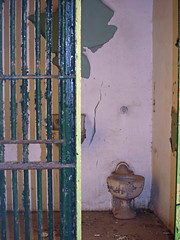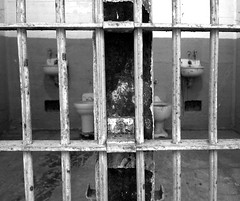I know it’s hard for many to believe in our polarized political climate, but there are issues on which liberals and conservatives are in accord. The brouhaha of election season has now ended, and we would like to shine a light on one of those subjects; incarceration.
There are some constants when considering the plight of the incarcerated, be they women, juveniles, veterans or some other demographic. These are things that cross party lines, and exist at the intersection of financial pragmatism and humanitarianism.
There are reassuring stirrings online. Take this November 13th article from The Reality Based Community by liberal blogger Harold Pollack:
For obvious reasons, liberals can’t fix this alone. But there’s good news. They’re not alone. One bright spot in modern conservatism has been the new concern expressed by many prominent figures from Bill Bennett to Newt Gingrich to the over-incarceration problem. Twenty years ago, culture-war conservatives supported harsh criminal justice policies. Since then, many conservatives have subsequent found reason to reconsider. Conservatives have different reasons for this change of perspective. Libertarians lament the expansive reach of the surveillance state, and the needlessly harsh punishment of many nonviolent offenders. Religious conservatives lament the incredible waste of human potential implied by the warehousing of so many people. Fiscal conservatives lament the billions of dollars spent to finance such policies.
This is key. Both sides need to see the common ground that exists on these issues. The fact that some are starting to notice it and write about it is heartening. The idea that conservatives and liberals cannot cooperate for the common good, or cannot find common ground on social issues, is a a mistake at best and a fabrication at worst.
We need to ignore the polemics of partisan politics and take a look at the people and groups who are guided by facts and research. For instance, many on the left are surprised when they learn that they have an ally in none other than Newt Gingrich, as reported in The Washington Monthly:
“There is an urgent need to address the astronomical growth in the prison population, with its huge costs in dollars and lost human potential,” Gingrich wrote in 2011. “The criminal-justice system is broken, and conservatives must lead the way in fixing it.”
None of Gingrich’s rivals in the vicious Republican presidential primary exploited these statements. If anything, his position is approaching party orthodoxy. The 2012 Republican platform declares, “Prisons should do more than punish; they should attempt to rehabilitate and institute proven prisoner reentry systems to reduce recidivism and future victimization.” What’s more, a rogue’s gallery of conservative crime warriors have joined Gingrich’s call for Americans to rethink their incarceration reflex. They include Ed Meese, Asa Hutchinson, William Bennett—even the now-infamous American Legislative Exchange Council. Most importantly, more than a dozen states have launched serious criminal justice reform efforts in recent years, with conservatives often in the lead.
I think it is important to point this out. Our nation’s dialogue all too often deteriorates into petulant name calling and far-fetched “facts”. A close look at the work actually being done across the country shows that both sides are finding positive results with rehabilitation instead of incarceration. From a fiscally conservative stance it quite simply provides “more bang for the buck,” while the socially conscious element of this approach appeals to liberals. Like all good plans it satisfies on multiple levels, the key one being results.
I’d like to make this call to action. Let us each reach out to those on the opposite side of the political divide and work with them on this. You might make some friends while doing good at the same time.
There are representatives of both the Left and the Right on our team at Humane Exposures. I consider it one of our strengths. I also consider it important that we are an example of the fact that both sides can work together for the common good and the future of our children.
Want a little bit more info on why It’s more expensive to do nothing? Check out this trailer for our documentary of the same name:
Related articles
- The Conservative War on Prisons (washingtonmonthly.com)
- “The GOP platform’s surprisingly progressive stance on crime” (sentencing.typepad.com)
- Newt Gingrich urging Gov Jerry Brown to sign law to allow resentencings for juve LWOP in California (sentencing.typepad.com)









 The economic side of the penal system is something we look at a lot. In so many cases, the return of preventative programs vastly outstrips the return we see from imprisoning people. Our documentary is titled
The economic side of the penal system is something we look at a lot. In so many cases, the return of preventative programs vastly outstrips the return we see from imprisoning people. Our documentary is titled  It is no secret that there is a link between education and one’s eventual path in life. Nowhere is this more painfully asserted than by the number of dropouts that end up in jail or prison. In Alabama, the officials have taken notice, and are using a short documentary film to communicate the “stay in school and out of prison” message to the students. Rick Harmon, a reporter for
It is no secret that there is a link between education and one’s eventual path in life. Nowhere is this more painfully asserted than by the number of dropouts that end up in jail or prison. In Alabama, the officials have taken notice, and are using a short documentary film to communicate the “stay in school and out of prison” message to the students. Rick Harmon, a reporter for 







